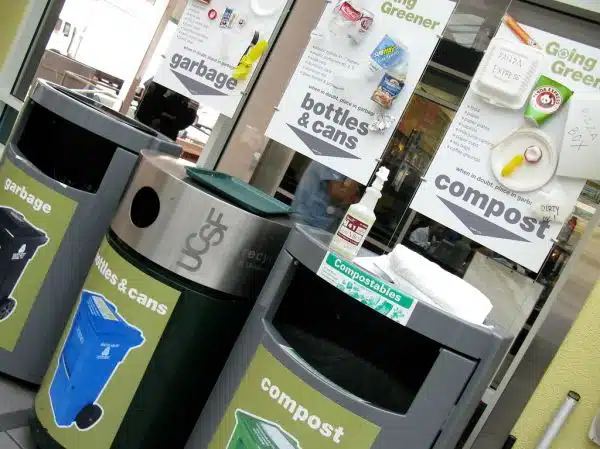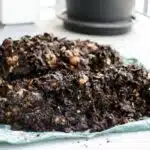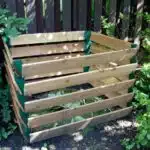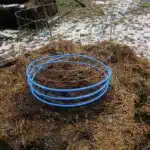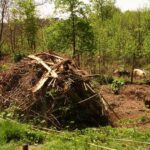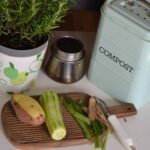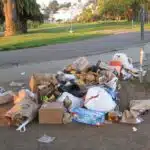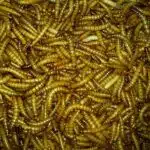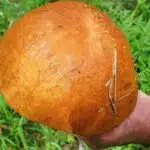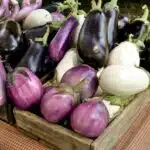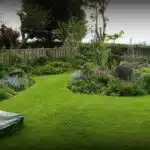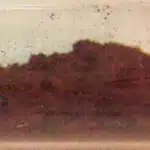Composting is an essential practice for organic gardeners, and it’s an excellent way to reduce waste. A trash can composter is a simple and effective way to produce nutrient-rich compost for your garden or plants. With a little effort and patience, you can turn your kitchen scraps and yard waste into black gold that will enhance soil fertility and plant growth.
In this article, we’ll guide you through the process of building and using a trash can composter. We’ll cover everything from selecting the right materials to maintaining your compost pile. Whether you’re a seasoned gardener or just starting, our step-by-step instructions will help you create a thriving compost pile that will benefit your garden and the environment. So, let’s get started!
Understanding The Benefits Of Composting
As an organic gardening expert, I am here to tell you that composting is a simple yet highly rewarding practice. Not only does it benefit the environment and promote sustainability, but it also improves soil health and supports healthy plant growth. Composting is the process of breaking down organic matter into nutrient-rich soil amendment, which can then be used to fertilize plants and gardens.
One of the biggest benefits of composting is its positive impact on the environment. By diverting food scraps and yard waste from landfills, we reduce methane emissions and limit the amount of waste sent to these already overcrowded areas. Additionally, composting reduces our reliance on synthetic fertilizers, which are often made from non-renewable resources and can have negative environmental consequences.
In addition to its environmental benefits, composting also promotes soil health. The nutrients present in compost help to create a healthy balance of microorganisms in the soil, which promotes plant growth and increases resistance to pests and diseases. Compost also helps improve soil structure by increasing water retention and reducing erosion.
Choosing the right location for your composter is crucial to its success. In order for your compost pile or bin to thrive, it needs proper drainage, ventilation, and access to sunlight. Keep in mind that your composter should also be easily accessible for adding new materials and harvesting finished compost. With these factors in mind, you’ll be well on your way to successful composting!
Choosing The Right Location For Your Composter
When selecting a location to build and use a trash can composter, proximity to the garden is key. Additionally, the composter should be placed in an area that receives ample sunlight in order to accelerate the composting process. Lastly, it is important to ensure the composter is situated in an area with good drainage in order to prevent any waterlogging.
Proximity To Garden
When choosing the right location for your composter, it is crucial to consider its proximity to your garden. There are several benefits to having the compost bin near your garden. Firstly, it reduces the need for transportation of compost to your plants. This not only saves time and energy but also allows you to incorporate fresh compost into your soil quickly.
Maintenance is another important factor when considering the location of your composter. Having it close to your garden makes it more convenient for regular maintenance tasks such as turning or adding materials. It also encourages consistent use of the composter, which is essential for producing high-quality compost that will benefit your plants.
Odor control and pest management are two concerns that can be addressed by placing the composter closer to the garden. The odor from decomposing materials can be overpowering, especially during hot weather conditions. By having it nearby, you can keep a closer eye on moisture levels and add dry ingredients like leaves or shredded paper as needed. Additionally, pests such as rodents or flies can be attracted to decomposing organic matter. By having a composter close by, you can monitor the situation and take steps to prevent these pests from causing damage in your garden.
In conclusion, when choosing the location for your trash can composter, consider its proximity to your garden while keeping in mind benefits such as reduced transportation needs and convenient maintenance tasks. Placing it near the garden also helps with odor control and pest management issues, allowing you to create high-quality compost that will nourish your plants and promote healthy growth without posing any risks or inconvenience.
Sunlight Exposure
When it comes to composting, choosing the right location is essential for maximizing efficiency and preventing overheating. Another important factor to consider is sunlight exposure. The amount of sunlight your composter receives can affect the decomposition process and the quality of your compost.
Ideally, you want to place your composter in an area that receives partial to full sunlight. This will help maintain a consistent temperature inside the bin, which is necessary for the breakdown of organic matter. However, too much direct sunlight can cause your compost to dry out and slow down the decomposition process. In this case, you can provide shade by using a cover or placing it under a tree or other shaded area.
On the other hand, if your composter doesn’t receive enough sunlight, it may not reach optimal temperatures for decomposing materials efficiently. This could result in slower decomposition and lower-quality compost. If you have limited options for a sunny location, consider adding insulation or using a black bin to absorb more heat from the sun.
In summary, finding the right balance of sunlight exposure is crucial when choosing the location for your composter. It’s important to ensure that it receives enough sunlight while also preventing overheating or drying out. By considering these factors and making adjustments as needed, you’ll be able to create high-quality compost that will benefit your garden in countless ways.
Drainage
When it comes to choosing the right location for your composter, there are various factors to consider. One of these is drainage, which involves ensuring that excess water doesn’t accumulate in the bin and prevent decomposition from occurring. This is especially important for outdoor composters that are exposed to rainwater.
Improving drainage is crucial for preventing waterlogging, which can lead to unpleasant odors and slow down the composting process. To achieve this, you can place your composter in a slightly elevated area or on top of bricks or blocks to allow water to drain away from the bin. Additionally, you can ensure that the bottom of your composter has adequate drainage holes that allow excess moisture to escape.
Another way of improving drainage is by adding bulking agents such as shredded leaves or newspaper to absorb moisture and prevent compacting. By doing so, you’ll create air spaces within the compost pile that will enhance oxygen circulation and improve decomposition efficiency. Overall, proper drainage is essential for creating healthy and nutrient-rich compost that will benefit your garden’s soil and plants in numerous ways.
Selecting The Right Materials
Materials selection is critical in building a successful trash can composter. The right components can help to speed up the decomposition process and create nutrient-rich soil for your garden. When selecting materials, it’s important to consider both their compostability and their ability to aerate the pile.
Compostable components are those that will break down quickly and add valuable nutrients to your soil. These include food scraps, grass clippings, leaves, and small twigs. It’s essential to avoid adding meat, dairy products, bones, or fats as these components take longer to decompose and attract pests. When adding new materials to your compost pile, make sure they are cut into small pieces to improve airflow.
In addition to compostable components, you’ll also need materials that help aerate the pile. This includes items such as dry leaves or straw which will add structure while allowing air to circulate through the pile. A well-aerated pile heats up more quickly and produces better quality compost. As you build your compost mix, aim for a ratio of 2:1 brown (carbon) materials like dry leaves or straw vs green (nitrogen) materials like food scraps or grass clippings.
Now that you have selected the right materials for your trash can composter, it’s time to start gathering the tools you’ll need for building it.
Tools You’ll Need For Building Your Composter
To build your own DIY compost bin, you will need a few essential tools. These tools will help you to construct a durable and effective composter that will turn your kitchen scraps and yard waste into nutrient-rich soil for your garden.
The first tool you’ll need is a drill with various drill bits. This will allow you to create ventilation holes in the sides and bottom of your composter, which are necessary for proper air flow and drainage. You’ll also need a saw to cut the wood or plastic material for the frame of your composter. A measuring tape and pencil will come in handy for marking out where to cut and drill.
Next, you’ll want to have some screws or nails on hand to secure the frame together. A hammer or screwdriver will be necessary for this step. Lastly, gloves are recommended to protect your hands from splinters and sharp edges while handling materials.
Table: Essential Tools
| Tool | Purpose |
|---|---|
| Drill with various bits | Create ventilation holes |
| Saw | Cut frame material |
| Measuring tape & pencil | Mark out cuts/drill spots |
| Screws/nails | Secure frame together |
| Hammer/screwdriver | Tighten screws/nails |
With these essential tools, you’re ready to start building the frame for your composter. But before we get into that, it’s important to note that safety should always be a top priority when working with power tools and sharp objects. Make sure you have read through all instructions thoroughly and take caution when using each tool. Now let’s move on to the exciting part – constructing your very own composter!
Building The Frame For Your Composter
For a composter built with a trash can, the materials and tools required are typically a metal trash can, metal screws and a drill. The frame should be assembled by drilling metal screws into the trashcan to securely attach the lid and the bottom to the walls of the can. The lid should be drilled with a few holes to facilitate air flow and the bottom should be drilled with a few holes to allow liquid to drain out. Finally, once the frame is assembled, the composter can be filled with organic waste.
Selecting Materials
When it comes to building a frame for your composter, selecting the right materials is crucial. There are various types of composting bins available in the market, but you can also opt to build one yourself using different materials. Before making any decisions, consider the size of your composting area and how much organic matter you will be composting.
One important factor to consider when selecting materials is whether or not you plan on composting with food scraps. If so, it’s best to avoid using treated wood or anything that has been painted or stained. Instead, opt for untreated wood or recycled plastic lumber. These materials are safe for composting and won’t leach harmful chemicals into your soil.
Another option is to use wire mesh or chicken wire. This material allows for more air circulation and drainage than solid walls, which can help speed up the composting process. No matter what materials you choose, make sure they are sturdy enough to withstand the weight of your organic matter and can hold up against harsh weather conditions. With the right selection of materials, you’ll be on your way to building a successful and efficient trash can composter in no time!
Assembling Frame
Now that you have selected the appropriate materials for your composter, it’s time to assemble the frame. The stability of your composter is critical, so make sure to build a strong and sturdy frame. Consider customizing the size and shape of your frame based on your composting needs.
To ensure composter stability, start by digging a shallow trench where you plan to place the frame. This will provide a level base for your composter and prevent it from shifting or tipping over. Place your chosen material (wooden planks, wire mesh, etc.) around the perimeter of the trench to create the walls of your frame.
Next, attach the corners of each wall together using screws or nails to create a secure structure. You can also add additional support beams along the sides and across the top as needed for added stability. Lastly, consider adding a hinged door or removable lid to make accessing your compost easier. By following these steps and customizing your frame according to your needs, you’ll have a functional and efficient composter in no time!
Adding Air Holes For Aeration
To ensure that your trash can composter is functioning at its best, it is essential to add air holes for aeration. This is because composting requires a constant supply of oxygen to keep the beneficial bacteria alive and thriving. Without proper ventilation strategies, the compost pile can become stagnant and lead to unpleasant odors or even fail to break down.
One of the easiest DIY modifications you can make is to drill holes into the sides and bottom of the trash can using a power drill. These holes should be evenly spaced apart and large enough to allow sufficient airflow but not too big that the compost falls out. Another way to increase aeration is by rotating or flipping over the contents of your composter regularly. This will prevent any clogs from forming and help distribute oxygen throughout the entire pile.
In summary, adding air holes for aeration is crucial in creating a successful composting environment. Proper ventilation strategies are important in allowing oxygen flow through your composter, which helps keep bacteria healthy and active. By incorporating some simple DIY modifications like drilling holes or rotating your compost pile, you’ll be well on your way to producing rich, nutrient-dense soil for all your gardening needs. With this step complete, you’re ready to move on to creating the compost pile itself.
Creating The Compost Pile
- Gathering Materials for a compost bin may include a large trash can, drill and drill bit, and a shovel.
- Preparing the bin involves drilling air holes in the side and bottom of the trash can and placing it in a sunny area.
- To begin adding to the compost pile, begin to layer organic materials such as kitchen scraps, garden waste, and shredded newspaper.
- A ratio of 30 parts carbon materials to 1 part nitrogen materials is recommended for optimal composting.
- Maintaining the compost pile requires turning the compost regularly to maintain the ideal temperature and moisture levels.
- The compost pile should be ready for use after a few months and can be used to enrich the soil of gardens and flower beds.
Gathering Materials
One of the most important steps in creating a successful compost pile is gathering the necessary materials. To start, finding containers to use as your composter is crucial. Consider using an old trash can or large plastic bin with a tight-fitting lid for this purpose. It’s important that the container be sturdy and able to withstand outdoor conditions.
Once you have found your containers, it’s time to source organic waste. This can include food scraps like vegetable peels, coffee grounds, and eggshells. Yard waste such as grass clippings, leaves, and small twigs are also great additions to your compost pile. It’s important to avoid adding meat, dairy products, or anything that has been chemically treated as these can slow down the composting process or even attract pests.
By taking the time to gather proper materials like containers and organic waste, you’ll be on your way to building a successful compost pile. Remember that this process takes time and patience – but the end result will be worth it!
Preparing The Bin
Creating a compost pile is an excellent way to reduce your carbon footprint and provide nutrient-rich material for your garden. One of the most important steps in building a successful compost pile is preparing the bin. The bin is where all the magic happens, so it’s essential to ensure that it is set up correctly. As an organic gardening expert, I recommend considering decorating options for your bin to make it blend in with its surroundings.
When preparing the bin, it’s crucial to choose a location that receives adequate sunlight and drainage. Once you’ve selected the perfect spot, you’ll need to layer the bottom of the bin with twigs or straw to improve airflow. This will help prevent any unpleasant odors from developing and allow beneficial microorganisms to thrive. Lastly, maintaining your compost pile is key, and regular turning will help break down materials more efficiently.
Maintenance tips include keeping a balance between brown (carbon) and green (nitrogen) materials and ensuring adequate moisture levels by adding water as needed. To further enhance the appearance of your compost pile, consider decorating options such as painting or adding stickers to the bin. These personal touches can help make your composting project feel more like a fun hobby than a chore.
By following these steps for preparing the bin and maintaining your compost pile, you can create nutrient-rich soil for your plants while reducing waste. Remember that creating a successful compost pile takes time and patience – but with some effort, you can turn organic waste into something beneficial for both yourself and others in need of healthy soil for their own gardens.
Adding To The Compost
When it comes to creating a compost pile, adding to it is just as important as preparing the bin. Composting food and yard waste can greatly reduce the amount of organic material that ends up in landfills while also providing nutrient-rich soil for your garden. As an organic gardening expert, I recommend regularly adding a variety of materials to your compost pile.
To ensure that your compost pile breaks down efficiently, it’s essential to maintain a balance between carbon-rich brown materials and nitrogen-rich green materials. Brown materials include things like dried leaves and straw, while green materials include fresh grass clippings and vegetable scraps. It’s also crucial to add water as needed to keep the pile moist but not saturated.
When adding food waste to your compost pile, be sure to avoid meats, dairy products, and fatty foods. These items can attract pests and slow down the decomposition process. Instead, stick to fruits and vegetables, coffee grounds, eggshells, and tea bags. Yard waste such as branches and twigs can also be added but should be chopped or shredded first for quicker breakdown.
By regularly adding a variety of materials like food scraps and yard waste to your compost pile while maintaining proper moisture levels and carbon-to-nitrogen ratios, you can create nutrient-rich soil for your garden while reducing waste. With a little patience and effort, you’ll soon have a thriving compost pile that will benefit both your plants and the environment.
Layering Your Compost Materials
To create a successful compost pile, it is important to properly layer your materials. This means alternating between carbon-rich “browns” and nitrogen-rich “greens.” Browns include items such as dried leaves, straw, and newspaper while greens consist of things like grass clippings, vegetable scraps, and coffee grounds. The ideal composting ratio is 30:1 (carbon to nitrogen), so aim for roughly 3 parts brown to 1 part green.
Start by adding a layer of browns to the bottom of your compost bin or trash can composter. Make sure the layer is about 2-3 inches thick. Then add a layer of greens on top, making sure it is also about 2-3 inches thick. Continue alternating layers until you have filled the bin, making sure to end with a brown layer on top.
The key to successfully composting your organic waste is maintaining an appropriate balance between greens and browns. If you add too many greens, the compost pile will become slimy and smelly. On the other hand, if you add too many browns, the pile will take much longer to break down. By following these simple steps in layering your materials correctly, you will be on your way to creating nutrient-rich soil for your garden in no time!
As important as it is to properly layer your materials when building a compost pile or using a trash can composter, it’s equally important to maintain that balance over time. In the next section we’ll discuss how to keep your compost pile healthy by managing moisture levels and turning the pile regularly.
Maintaining Your Compost Pile
To maintain the health and efficiency of your compost pile, proper composting maintenance is crucial. This means regularly turning the pile to aerate it and promote decomposition, as well as monitoring its moisture levels to ensure that it stays damp but not waterlogged. Additionally, keep in mind that certain materials should not be added to your compost bin, such as meat and dairy products or diseased plant matter.
To make sure you are getting the most out of your composting efforts, here are three key composting maintenance tips:
- Turn your pile regularly: To encourage the breakdown of materials and prevent matting, turn your compost pile every few weeks with a pitchfork or shovel. This will also help to aerate the pile and prevent unpleasant odors.
- Monitor moisture levels: Your compost pile should be moist but not soggy. To maintain proper moisture levels, add water as needed during dry periods and cover the pile during wet weather.
- Add nitrogen-rich materials: To speed up decomposition and balance carbon-to-nitrogen ratios in your pile, add nitrogen-rich materials like grass clippings or coffee grounds.
Despite your best efforts, you may encounter some common issues when composting. Here are some troubleshooting tips for addressing these problems:
- Foul odor: If your compost smells bad, it may be too wet or contain too much nitrogen-rich material. Try adding more brown materials like dried leaves or straw to balance things out.
- Slow decomposition: If your compost isn’t breaking down quickly enough, it may need more oxygen or nitrogen-rich material. Try turning the pile more frequently or adding fresh grass clippings.
- Pests: If you notice pests like fruit flies or rodents in your compost bin, avoid adding meat or dairy products and make sure to bury food scraps under other materials to discourage pests from accessing them.
Moving forward with these maintenance tips in mind can help you achieve a healthy and nutrient-rich compost pile. However, it’s important to address any issues that arise promptly to ensure that your compost is working as efficiently as possible.
Troubleshooting Common Composting Issues
Dealing with pests is a common issue when composting. While composting is a natural process, it can attract unwanted insects and animals such as flies, ants, rodents, and raccoons. To avoid this problem, ensure that your compost bin is properly sealed to keep pests out. You can also try burying food scraps deeper into the compost pile to deter scavengers.
Managing odor is another common issue with composting. As organic matter breaks down, it releases gases that can produce a foul smell. To reduce odor levels, avoid adding too much nitrogen-rich materials such as food scraps or grass clippings at once. Instead, alternate these materials with carbon-rich materials like leaves or shredded paper. Additionally, turning your compost pile regularly will help increase airflow and prevent anaerobic conditions that lead to unpleasant smells.
In some cases, even with proper maintenance of your compost bin, you may still encounter issues with pests or odors. In these situations, there are several solutions you can try such as adding diatomaceous earth to deter insects or using an odor-neutralizing spray designed for compost bins. Remember that composting is a natural process and it may take some trial and error before finding what works best for your specific situation.
Transition: Now that you have learned how to troubleshoot common issues that may arise during the composting process, let’s move on to the next step – harvesting your nutrient-rich soil amendment.
Harvesting Your Compost
The first step in harvesting compost is to collect the organic waste that will be used as compost. This may include kitchen scraps, garden trimmings, and other organic waste. Once collected, the compost should be prepared by ensuring it is properly aerated and moistened. This can be done in a trash can composter by regularly turning the compost and adding water as needed. Finally, the compost should be allowed to mature and should be ready to use in six to eight weeks.
Collecting Compost
Compost collection is an essential part of the composting process. It involves gathering organic waste materials such as food scraps, yard trimmings, and dried leaves to be added to your composter. Composting helps in waste reduction by diverting waste from landfills and reducing greenhouse gas emissions.
When collecting compost, it is important to consider what can and cannot be added to your composter. Materials that can be added include fruit and vegetable scraps, coffee grounds, eggshells, grass clippings, and shredded paper. On the other hand, items such as meat, bones, dairy products, and pet waste should not be added because they attract pests or do not break down easily.
To ensure a steady supply of compost for your garden needs, it is recommended to collect compost regularly throughout the year. The frequency of collection may vary depending on the size of your household or garden. With proper compost collection practices in place, you can help reduce waste while also creating a nutrient-rich soil amendment for your plants’ growth and development.
Preparing Compost
Preparing compost is an important step in the journey towards creating a healthy and sustainable garden. Composting benefits are numerous, including reducing waste, saving money on fertilizers, and promoting biodiversity in your soil. To prepare your compost, you’ll need to use several techniques that will help speed up the decomposition process.
One technique for preparing compost is to ensure that the materials in your composter are properly balanced. This means adding equal amounts of green and brown materials. Green materials include food scraps and grass clippings, while brown materials include dried leaves and wood chips. Additionally, it is important to keep your compost moist but not too wet. A good rule of thumb is to maintain a moisture level similar to that of a wrung-out sponge.
Another important technique for preparing compost is to aerate it regularly. This can be done by turning the pile with a pitchfork or using a tumbling composter. Aeration helps introduce oxygen into the pile, which speeds up decomposition and prevents unpleasant odors from forming. With consistent effort and attention to detail when preparing your compost, you can create abundant healthy soil for all of your gardening needs without having to rely on harmful chemical fertilizers or other unsustainable practices.
Using Your Compost In Your Garden
Once your compost is ready, it’s time to use it in your garden. Using vermicomposting, or using worms to break down the organic matter, can help maximize compost yield and produce nutrient-rich soil. You can also mix the compost with other organic materials such as leaves, grass clippings, and wood chips to create a nutrient-rich soil amendment.
Using your compost in your garden has many benefits beyond just providing nutrients for your plants. It can also improve the soil structure by increasing water retention and improving drainage. This can lead to healthier plant growth and fewer pest problems.
When applying compost to your garden, make sure to spread it evenly over the surface and mix it into the top few inches of soil. Be sure not to add too much at once as this can cause nutrient imbalances and damage plant roots. With proper use of compost, you’ll reap the rewards of healthier plants and bountiful harvests.
Transition: Now that you know how to use your compost in the garden, let’s explore some other uses for this valuable resource.
Other Uses For Compost
Using compost in your garden can be a game-changer. It not only improves soil quality but also supports healthy plant growth, reduces waste, and saves money. However, for those who live in urban areas or have limited outdoor space, composting may seem challenging. Fortunately, composting indoors or in small spaces is possible and can yield excellent results.
Composting indoors involves using a container that fits nicely under the sink or on the balcony. You will need to add organic matter such as fruit and vegetable scraps, coffee grounds, eggshells along with some leaves or shredded newspaper. Turn the contents frequently to incorporate oxygen and prevent bad odors from building up. The result will be nutrient-rich soil amendment that can be used for houseplants or outdoor containers.
Composting for urban gardens requires a bit more planning but is an excellent way to reduce waste and improve soil fertility. Using a trash can composter is one option where you layer organic materials such as grass clippings, food scraps, and leaves inside the bin. You will need to keep it moist but not too wet, turn the contents every few weeks to speed up decomposition and use it once it’s crumbly and has lost its original form. With time and patience, even small-space gardeners can create black gold that benefits their plants.
To make the most of your small space while composting indoors or outdoors, here are some tips for successful composting: use a container with a tight-fitting lid to keep out pests; chop up larger food scraps into smaller pieces before adding them; avoid adding meat products; add dry materials like shredded newspaper between layers of wet materials like kitchen scraps; use a compost thermometer to monitor temperature; finally, don’t forget to stir your compost regularly! By following these simple tips you should have no trouble creating rich fertilizer for your plants regardless of where you live!
Tips For Composting In Small Spaces
Indoor composting is an excellent way to reduce waste and create nutrient-rich soil for your indoor plants. Composting in small spaces, such as apartments, can seem daunting at first, but it is possible with a little effort and creativity. Here are some tips for composting in small spaces:
Use a small container: Choose a container that fits the available space in your apartment and is easy to move around. A plastic storage bin or trash can work well for indoor composting.
Use the right materials: Indoor composting requires a balance of green (nitrogen-rich) and brown (carbon-rich) materials. Greens include fruit and vegetable scraps, coffee grounds, and eggshells; browns include dry leaves, shredded paper, and cardboard.
Keep it moist: The compost needs to be kept moist but not too wet. Add water as needed to keep the material damp but not soggy.
With these tips in mind, you can start indoor composting even if you live in an apartment. By reducing your waste and creating nutrient-rich soil for your plants, you’ll be doing your part to help the environment.
In addition to these tips, there are many resources available online and in gardening stores to help you get started with indoor composting. Some examples include instructional videos on YouTube or books on organic gardening from your local library. With a little research and effort, anyone can enjoy the benefits of indoor composting regardless of their living situation.
Transition: Now that you have some tips for successful apartment composting let’s talk about how to make sure your efforts result in happy compost!
Conclusion: Happy Composting!
Like a well-tended garden, a successful compost pile requires care and attention. As organic gardening experts, we know that the benefits of composting are numerous, from reducing waste to improving soil health. By building and using a trash can composter, you have taken an important step towards sustainability and self-sufficiency.
However, as with any gardening endeavor, there may be challenges along the way. If your compost pile is not breaking down properly or emitting unpleasant odors, do not despair. Troubleshooting tips include adjusting the balance of nitrogen-rich greens to carbon-rich browns, ensuring adequate moisture levels, and turning the pile regularly. With patience and perseverance, you will soon reap the rewards of your efforts in the form of rich organic matter for your garden.
In conclusion, composting is a practical and rewarding activity that benefits both the environment and our own well-being. By building and using a trash can composter, you have taken an important step towards reducing waste and improving soil health. Remember to troubleshoot any issues that may arise along the way, and enjoy the satisfaction of knowing that you are serving yourself and others by creating a healthier planet through sustainable gardening practices.
Conclusion
Composting is a sustainable way to reduce waste and improve the health of your garden. When building a trash can composter, consider its location and the materials you will use. You will also need some tools to construct the frame. Once your composter is built, add organic material such as leaves, food scraps, and grass clippings. Allow time for decomposition, then use the resulting compost to enrich your soil.
Compost can also be used in a variety of ways beyond just fertilizing your garden. It can be used as mulch or even as a natural pest repellent. If you live in a small space, there are still ways to compost effectively without taking up too much room. Remember that composting takes time and patience but it is worth the effort.
As an organic gardening expert, I highly recommend using composting as a means of reducing waste and improving soil health. The benefits of composting are numerous and far-reaching. By diverting organic matter from landfills and turning it into nutrient-rich fertilizer, we can reduce greenhouse gas emissions and contribute to more sustainable living practices overall. So go ahead – start building your trash can composter today and join the millions who have already embraced this eco-friendly practice!
Image Credits
- “UCSF Millberry Union trash, recycling, compost” by frankfarm (featured)

